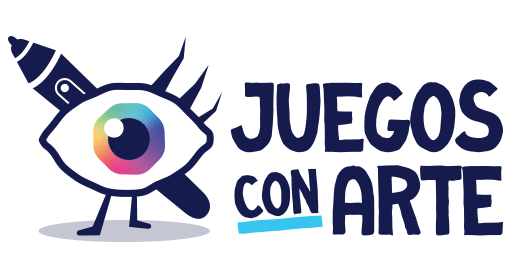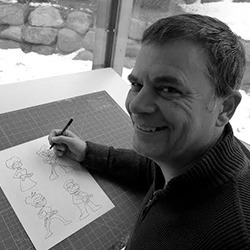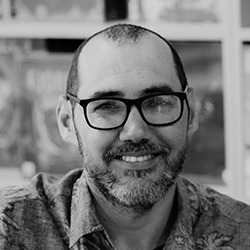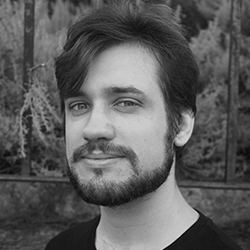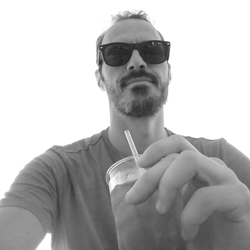
Empezamos el mes de abril con la entrevista al dibujante de cómic e ilustrador Arjuna Susini, con motivo del lanzamiento del juego de mesa «Posthuman Saga» de la editorial Mighty Boards y editado en España gracias a la editorial Ingenio Games.
Arjuna nos hablará de cómo fue su experiencia y creación en Posthuman y cuales son sus últimos proyectos en el mundo de los cómic y juegos de mesa.
ENG | Hi Arjuna, thanks for collaborating with us! For our readers who don’t know your work yet, could you tell us a bit about yourself and your professional career?
Hi Moises thank you for contacting me for this interview. I greet all the readers and I introduce myself, my name is Arjuna Susini classes 1984 and I am mainly a comic artist, but often I work on boardgame illustrations and concept art. I am from Livorno, a small seaside town in Tuscany close to Pisa and Florence, I did art schools, Istituto d’Arte in Pisa, painting at Accademia di Belle Arti in Florence and comics in Internazionale Scuola di Comics was in Florence, I finished my studies in 2008.
I have been working in this sector for something more than 10 years and it has been, (is) a very complicated road where it takes time to start being able to be economically independent. After graduation, I started with small publications in Italy then in 2012 I collaborated with Graphic India until 2015 on 2 comic series, in the meantime, I began my collaboration with Mighty Board for the first Posthuman, then in 2016 with Paul Tobin I started working for the US publishers on «Made Men» (Oni Press) then in 2017/8 I worked the graphic novel «Leone» (Sergio Bonelli Editore) an Italian publisher, and then in 2019 with Zack Thompson The Replaicer (Afterchock comics) again with Tobin 2020 Heist or how to steal a planet (Vault Comics) 2021 Mark D’anna Blood on Sunset (Source point press) and Vodoo Cowboy with Matt Garvey a Kickstarter that should be live right now! And in the midst of all this I continued to collaborate also for Posthuman of course.
ESP | Hola Arjuna, ¡gracias por colaborar con nosotros! Para nuestros lectores que aún no conocen tu trabajo, ¿podrías hablarnos un poco de ti y de tu trayectoria profesional?
Hola Moisés gracias por contactar conmigo para esta entrevista. Saludo a todos los lectores y me presento, mi nombre es Arjuna Susini nací en 1984 y soy principalmente un artista del cómic, pero a menudo trabajo en ilustraciones de juegos de mesa y el arte conceptual. Soy de Livorno, una pequeña ciudad costera en la Toscana cerca de Pisa y Florencia, me forme en las escuelas de arte, Istituto d’Arte en Pisa, la pintura en la Accademia di Belle Arti en Florencia y los cómics en Internazionale Scuola di Comics aways en Florencia, terminé mis estudios en 2008.
Llevo algo más de 10 años trabajando en este sector y ha sido, (es) un camino muy complicado en el que se necesita tiempo para empezar a ser económicamente independiente. Después de la graduación empecé con pequeñas publicaciones en Italia luego en 2012 colaboré con Graphic India hasta 2015 en 2 series de cómics ,mientras tanto empecé mi colaboración con Mighty Board para el primer Posthuman, luego en 2016 con Paul Tobin empecé a trabajar para la editorial estadounidense en «Made Men» (Oni Press) luego en 2017/8 trabajé la novela gráfica «Leone» (Sergio Bonelli Editore) una editorial italiana, ¡y luego en 2019 con Zack Thompson The Replaicer (Afterchock comics) de nuevo con Tobin 2020 Heist or how to steal a planet (Vault Comics) 2021 Mark D’anna Blood on Sunset (Source point press) y Vodoo Cowboy con Matt Garvey un Kickstarter que debería estar en vivo ahora mismo! Y en medio de todo esto seguí colaborando también para Posthuman por supuesto.
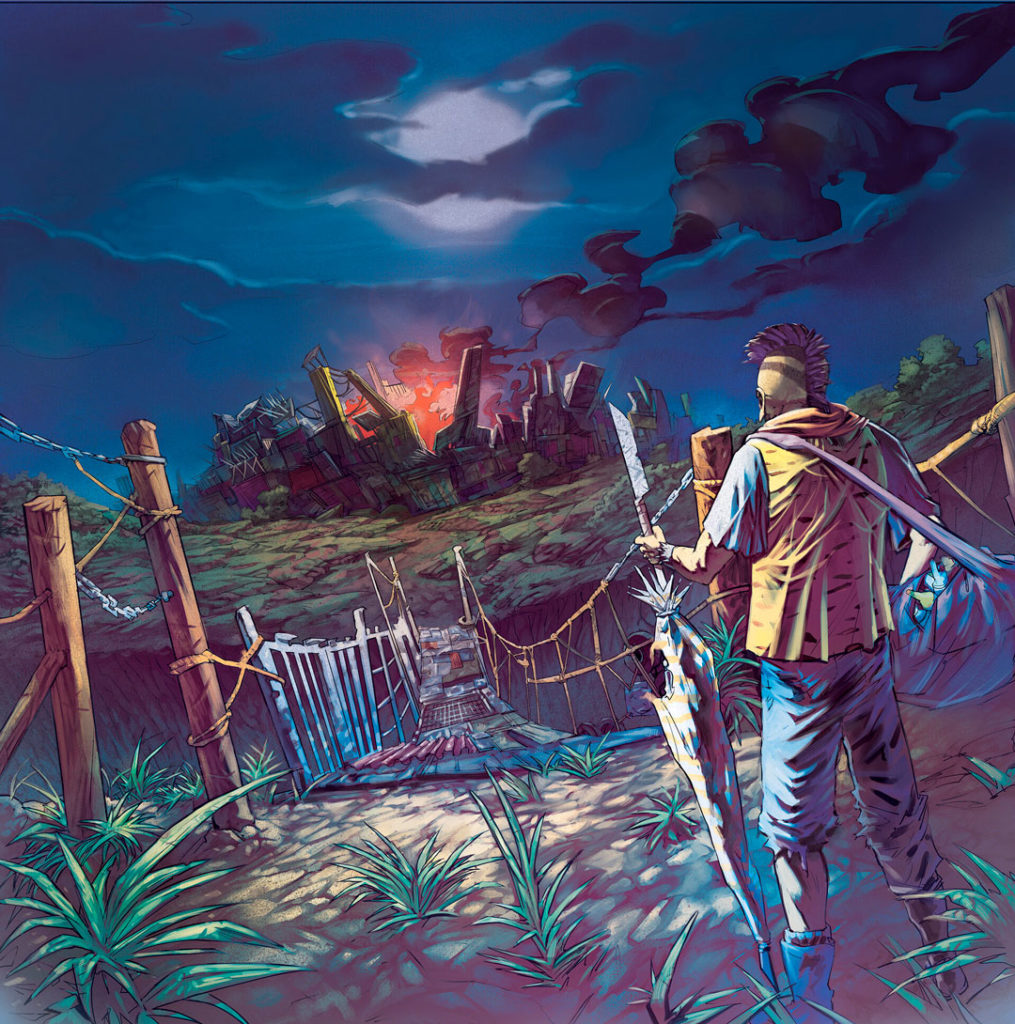
ENG | I have to say that we love the illustrations in your portfolio and they remind us of the great Bernie Wrightson. What inspirations or references would you say have influenced your current work or style?
Thank you very much for the juxtaposition, I love Wrightson and you are not the first one who to tell me this, having said that, however, I am perfectly aware that my work is not comparable to his, which is millions of light-years ahead of me.
Among the illustrations in digital colorings, such as Posthuman, and my comics there are many differences, let’s say that I adopt 2 different styles, in comics what attracts me a lot is the black/white contrast and the working with textures all in traditional, with brushes, nibs, Indian ink, and white acrylic, I have many artists that I look avidly, from the past and the present and in my small way I try to invent something of personal.
For digital illustrations, on the other hand, I’ve a completely different approach, the clear line drawing and then I work on lights and shadows in a pictorial way.
ESP | Tenemos que decir que las ilustraciones de tu portafolio nos encantan y nos recuerdan al gran Bernie Wrightson. ¿Qué inspiraciones o referencias dirías que han influido en tu trabajo o estilo actual?
Muchas gracias por la yuxtaposición, me encanta Wrightson y no eres el primero que me lo dice, dicho esto, sin embargo, soy perfectamente consciente de que mi trabajo no es comparable al suyo, que está a millones de años luz por delante de mí.
Entre las ilustraciones en coloreados digitales, como Posthuman, y mis cómics hay muchas diferencias, digamos que adopto 2 estilos diferentes, en los cómics lo que me atrae mucho es el contraste blanco/negro y el trabajo con texturas todo en tradicional, con pinceles, plumillas, tinta china, y acrílico blanco, tengo muchos artistas que miro con avidez, del pasado y del presente y a mi pequeña manera intento inventar algo de personal.
Para las ilustraciones digitales, en cambio, tengo un enfoque completamente diferente, el dibujo de línea clara y luego trabajo las luces y las sombras de forma pictórica.

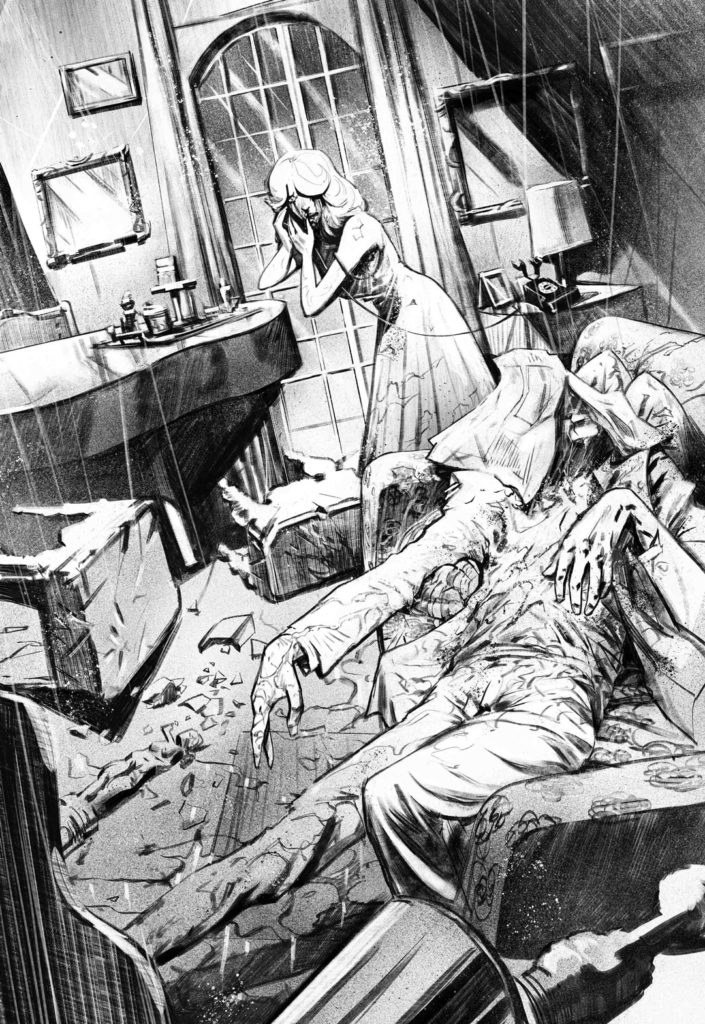
ENG | Let’s talk about one of your first illustrated board games, Posthuman Saga. How did you get involved in the project and what made you want to participate?
In 2014, my agency at the time proposed me to start the collaboration with Mighty Boards on the first Posthuman, the work had already started but for some reason the illustrator who was working on it couldn’t finish the job so I took over.
I made the characters, the cover and the illustrations for the promotional video and it has gone very well on Kickstarter since then along with Mark Casha the art director I have continued to make my collaboration for all subsequent expansions and it still continues today.
ESP | Hablemos de uno de sus primeros juegos de mesa ilustrados, Posthuman Saga. ¿Cómo te involucraste en el proyecto y qué te hizo querer participar?
En 2014, mi agencia de entonces me propuso iniciar la colaboración con Mighty Boards en el primer Posthuman, el trabajo ya había comenzado pero por alguna razón el ilustrador que estaba trabajando en él no pudo terminar el trabajo así que me hice cargo.
Hice los personajes, la portada y las ilustraciones para el video promocional y ha ido muy bien en Kickstarter desde entonces junto con Mark Casha el director de arte he seguido haciendo mi colaboración para todas las expansiones posteriores y aún continúa en la actualidad.

ENG | How was your creative process? Tell us about the process, from the first ideas to the final artwork.
There are several factors that contribute to the creative process, the first is the study of the client’s briefing, generally, this work is made up of commissions that are concept games or comics, so I try to immerse myself in the thing they submit to me and try to understand it the essence, a flavor that is very defined, after which I try and try again to build characters or ambient shots that return this flavor as much as possible, generally there aren’t very long descriptions, but you don’t need too much to understand, sometimes less is better…
And then there is me, clearly, I exalt and emphasize the things that are on my strings, if you send the same script, written with the same words, to 10 different artists you will get 10 completely different results because we have the way to make the shots act compositions that will enhance different aspects of the same screenplay, so the client, knowing your works and looking for you, is often interested in your way of seeing the narration and this is very creative.
ESP | ¿Cómo fue tu proceso creativo? Háblenos del proceso, desde las primeras ideas hasta la obra de arte final.
Hay varios factores que contribuyen al proceso creativo, el primero es el estudio del briefing del cliente, por lo general, este trabajo se compone de encargos que son juegos conceptuales o cómics, así que trato de sumergirme en lo que me envían y tratar de entender la esencia, un sabor que está muy definido, después de lo cual trato y vuelvo a tratar de construir personajes o planos de ambiente que devuelvan este sabor lo más posible, por lo general no hay descripciones muy largas, pero no se necesita demasiado para entender, a veces menos es mejor…
Y luego estoy yo, claramente, exalto y enfatizo las cosas que están en mis hilos, si envías el mismo guión, escrito con las mismas palabras, a 10 artistas diferentes obtendrás 10 resultados completamente diferentes porque tenemos la manera de hacer que los planos actúen composiciones que realcen diferentes aspectos del mismo guión, así que el cliente, conociendo tus trabajos y buscándote, suele interesarse por tu manera de ver la narración y esto es muy creativo.
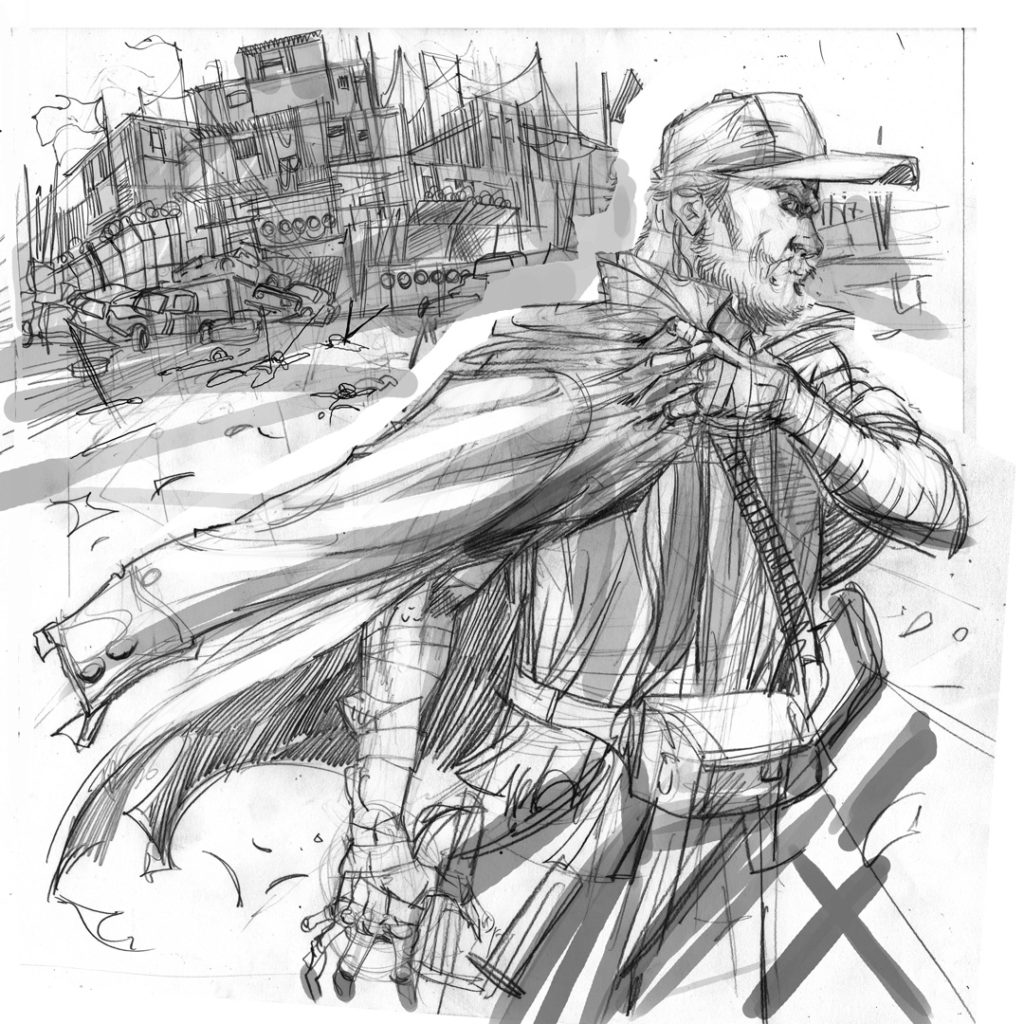
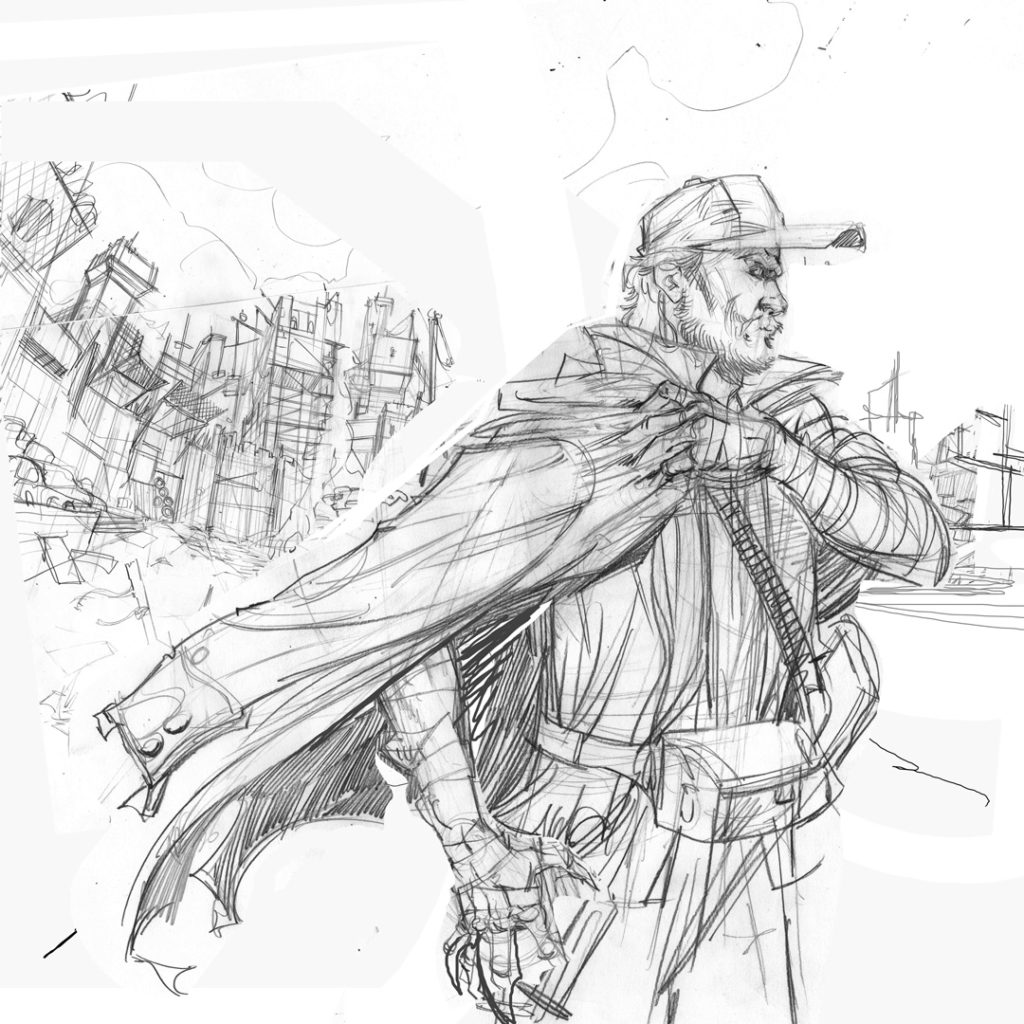
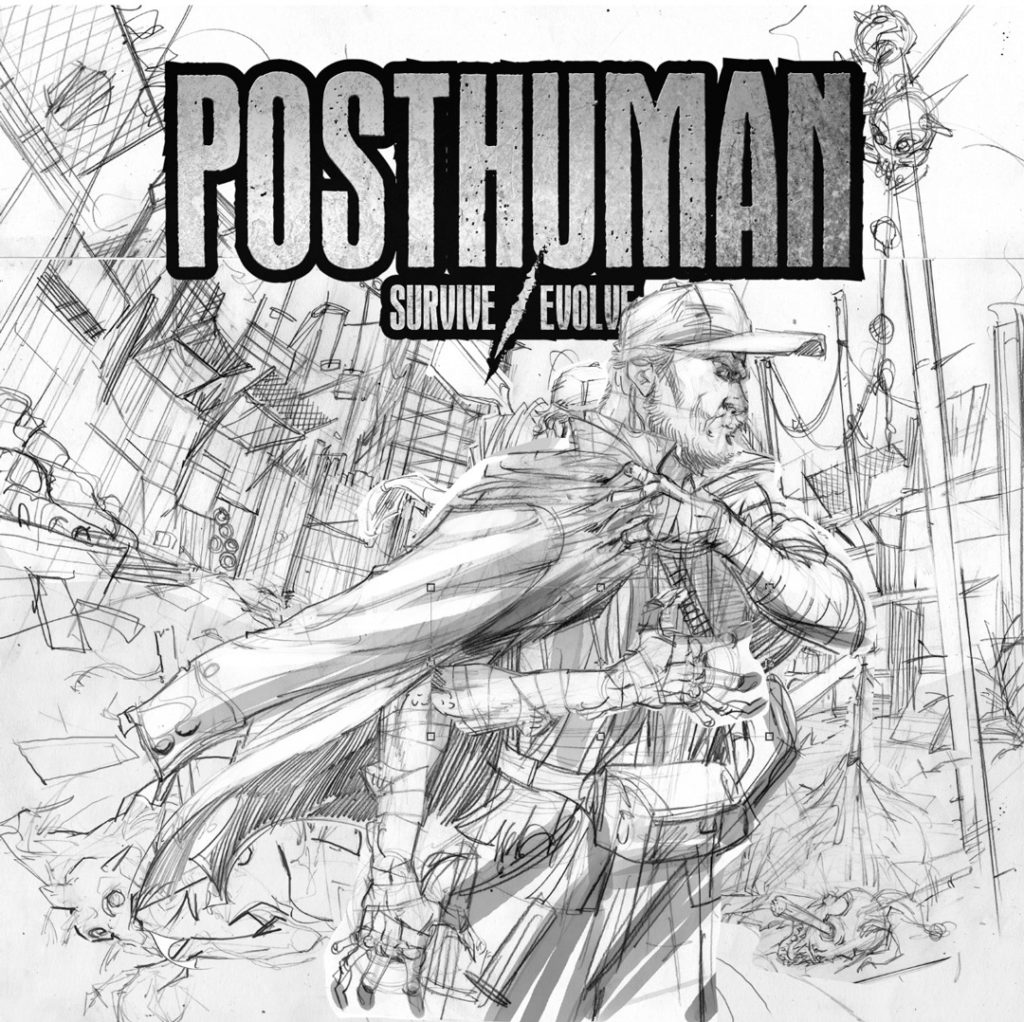

ENG | In Posthuman Saga we will be survivors who must survive all kinds of mutants and mishaps in a devastated world. How was the process of documenting and creating these characters full of life?
I have always nourished myself with this kind of setting, reading comic books and watching movies and video games, so it was very natural for me to get into it.
I just can say that my brothers that are 10 years older than me, when I was 6 old we watched together Ken Shiro, you can imagine what kind of shock this may be…
And more generally, I grew up with all manga comics and anime, movies, and all kinds of cultural industries of the 80s/90s that we all know very well!
A list could be infinite…
ESP | En Saga Posthumana seremos supervivientes que debemos sobrevivir a todo tipo de mutantes y percances en un mundo devastado. ¿Cómo fue el proceso de documentación y creación de estos personajes llenos de vida?
Siempre me he nutrido de este tipo de ambientación, leyendo cómics y viendo películas y videojuegos, así que fue muy natural para mí meterme en esto.
Sólo puedo decir que mis hermanos que son 10 años mayores que yo, cuando tenía 6 años vimos juntos Ken Shiro, ya te puedes imaginar el shock que puede suponer…
¡Y más en general, crecí con todos los cómics manga y anime, películas, y todo tipo de industrias culturales de los 80/90 que todos conocemos muy bien!
La lista podría ser infinita…

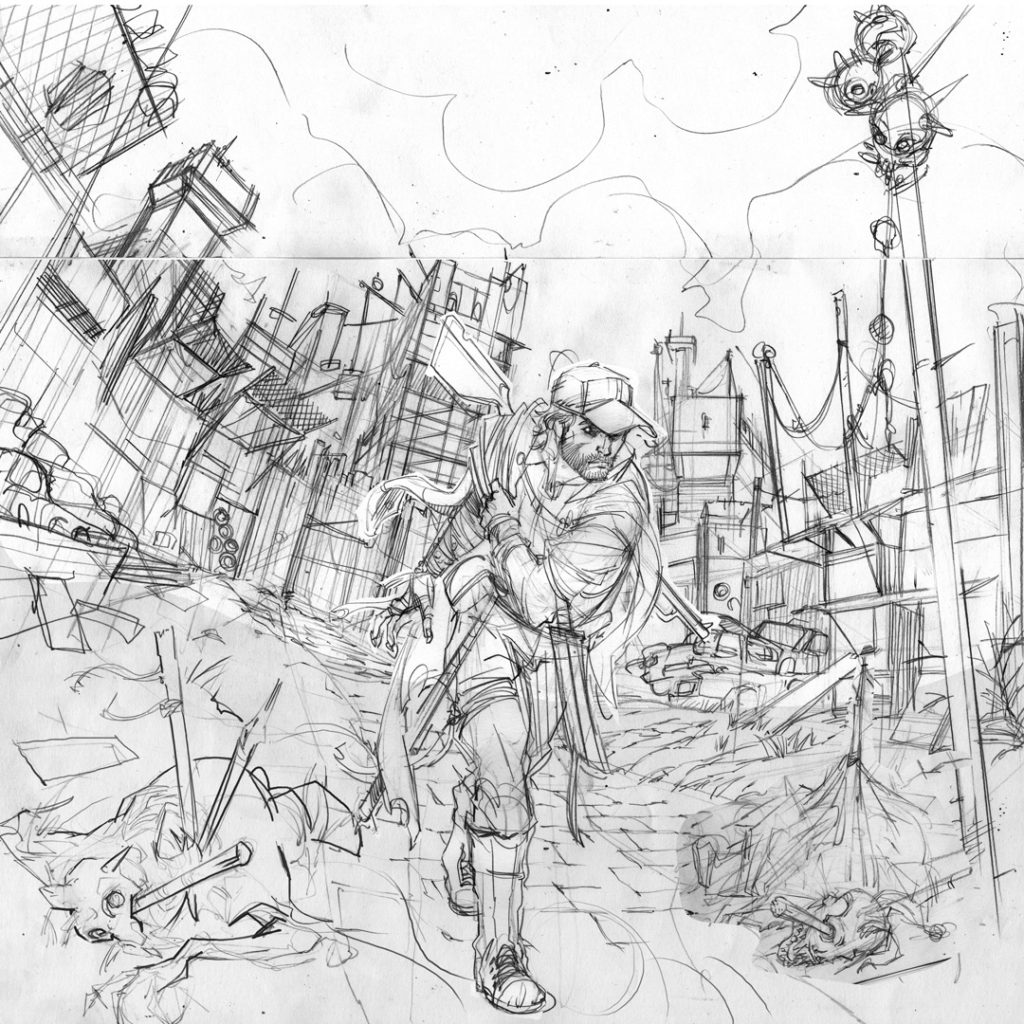
ENG | What advice would you give to our readers who want to draw charismatic characters like the ones you create in your illustrations?
Emotions are the basis, that character must become a kind of mask that embodies a feeling or a sensation, this is the main engine for me, but it also takes technique to control this emotion deforming in a right way, otherwise it becomes too grotesque, which I always risk doing.
In the beginning, I was too deforming in my figures and this is not good if you don’t want to stay in the underground, you have to try to have the reins and train your hand technically, (anatomy perspective drawing from still life, etc…)
ESP | ¿Qué consejo daría a nuestros lectores que quieren dibujar personajes carismáticos como los que usted crea en sus ilustraciones?
Las emociones son la base, ese personaje debe convertirse en una especie de máscara que encarna un sentimiento o una sensación, este es el motor principal para mí, pero también se necesita técnica para controlar esta emoción, deformando de una manera correcta, de lo contrario se convierte en algo demasiado grotesco, que siempre corro el riesgo de hacer.
Al principio, yo solía deformar demasiado mis figuras y esto no es bueno si no quieres quedarte en el «underground», tienes que intentar tener las riendas y entrenar tu mano técnicamente, (anatomía, perspectiva, dibujo de naturaleza muerta, etc…)
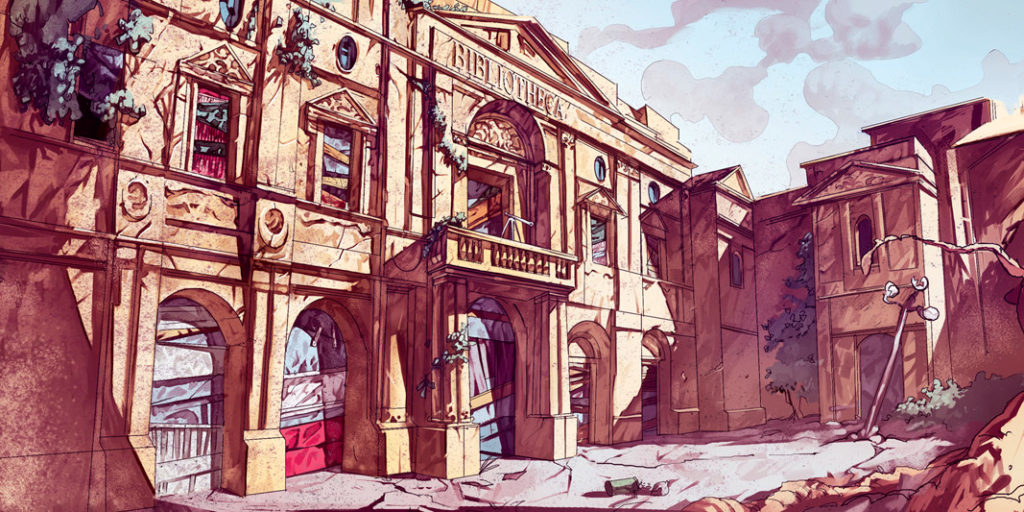
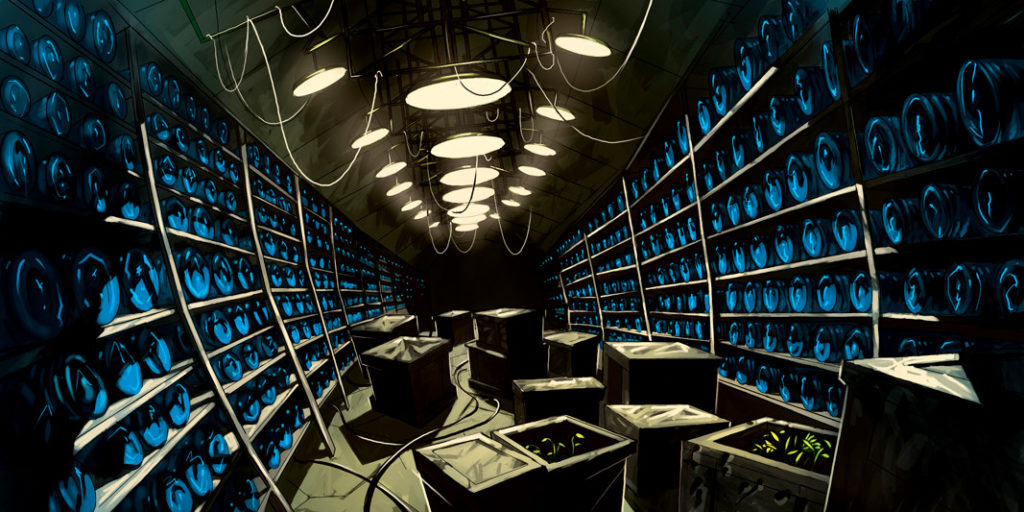
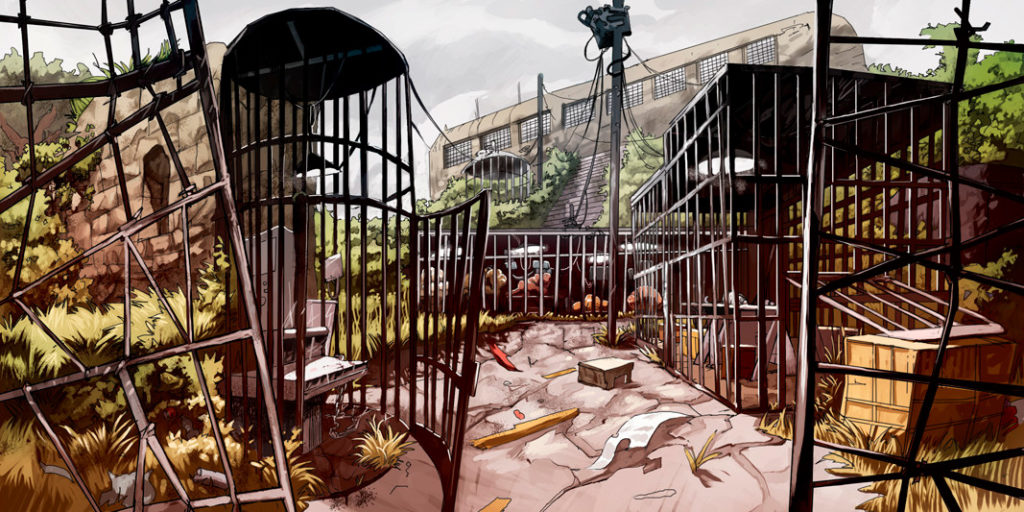
ENG | During the process of creating Posthuman Saga, which parts were the most challenging and how did you solve them?
Often, as I said, I deform too much.
I am used to comics where the actions are justified by the story that if one punches I know the reason, and then I try to put it on that panel every detail of the motivations of that action, this improves my drawing.
While the positions that are created for a board game or other actions and poses are totally aesthetic, to show the character and my limits as an artist come out not perfect anatomies etc…. Fortunately, the characters of Posthuman are very captivating and they have a very strong story behind and I really enjoyed working out their looks.
ESP | Durante el proceso de creación de Posthuman Saga, ¿qué partes fueron las más difíciles y cómo las resolviste?
Muchas veces, como he dicho, deformo demasiado.
Estoy acostumbrado a los cómics donde las acciones están justificadas por la historia, si se pega un puñetazo, trato de dibujar la escena en cada posición según el motivo de la acción, esto mejora mi dibujo.
Mientras que las posturas que se crean para un juego de mesa u otras acciones y poses son totalmente estéticas, para mostrar al personaje y mis límites como artista salen anatomías no perfectas etc…. Afortunadamente, los personajes de Posthuman son muy cautivadores y tienen una historia muy fuerte detrás y disfruté mucho trabajando sus aspectos.
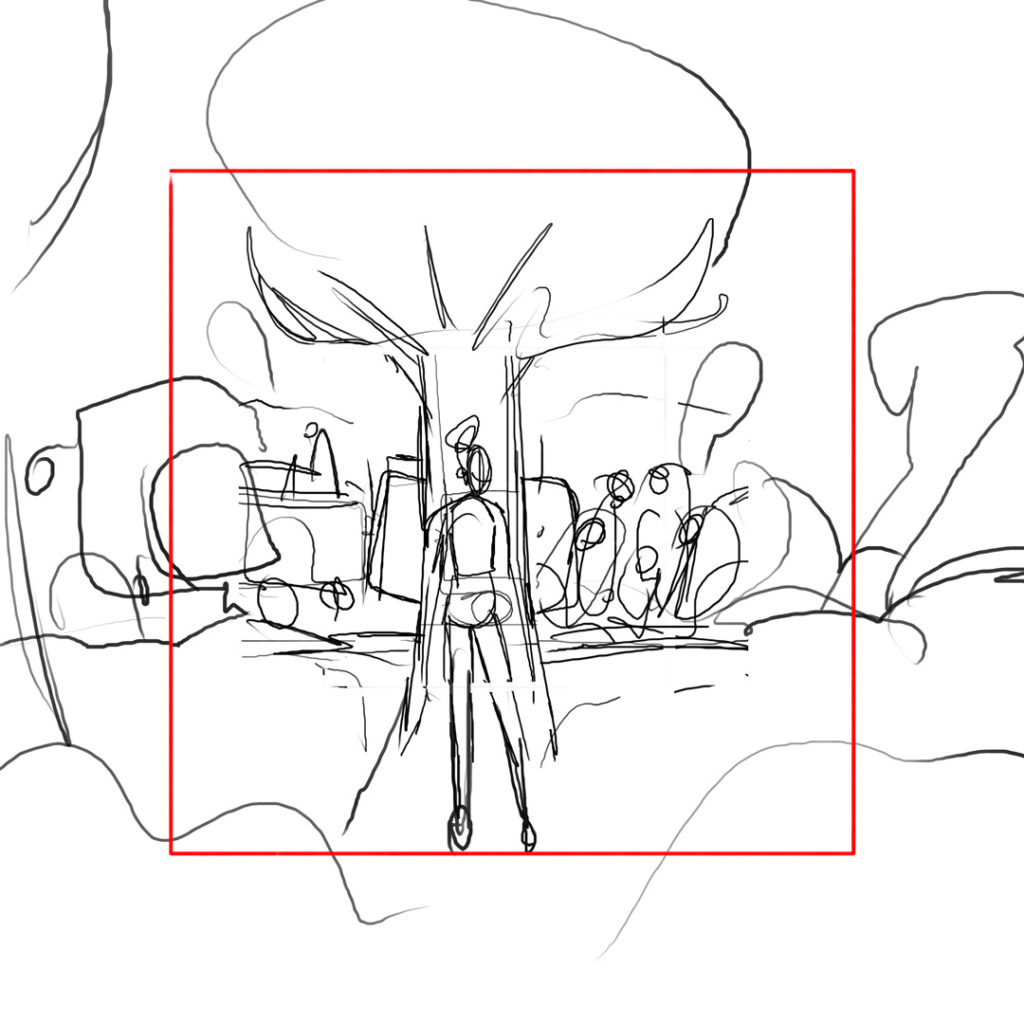
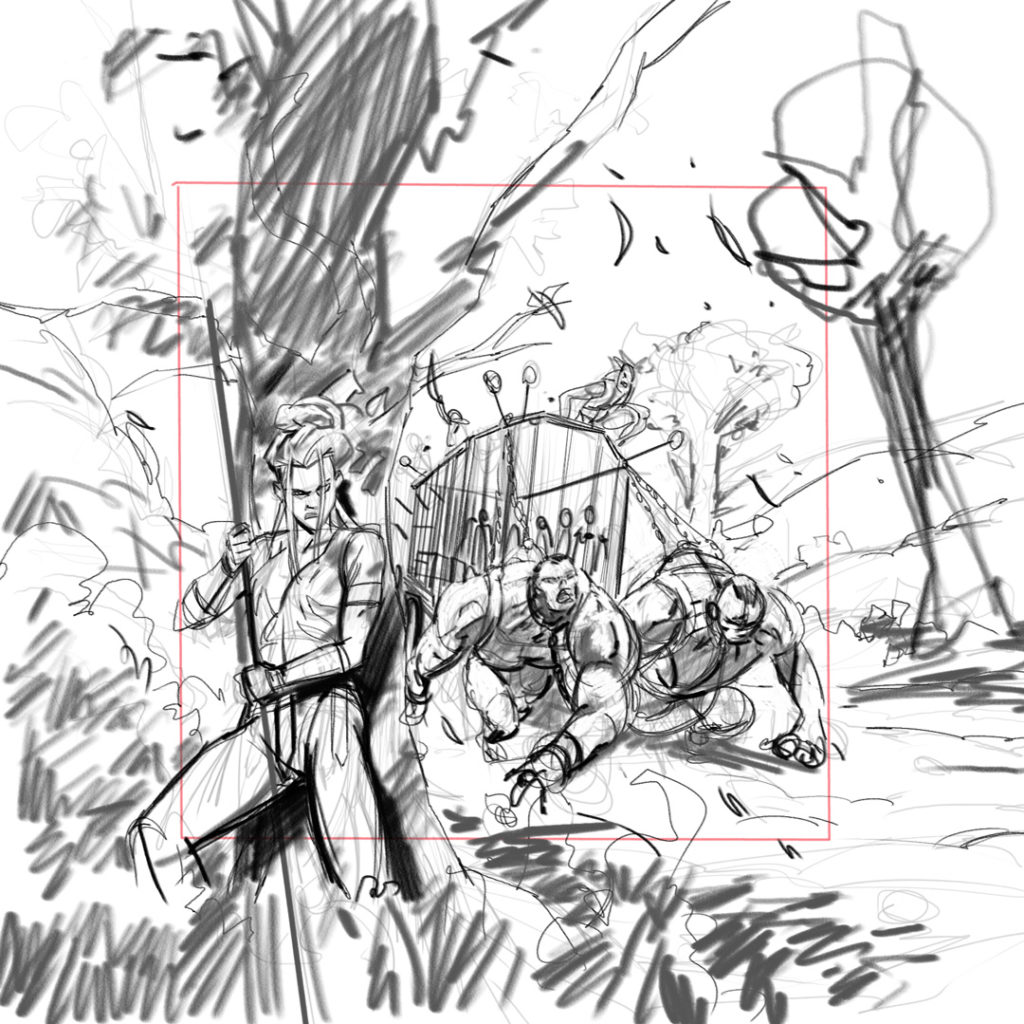
ENG | Let’s talk about colour and its importance in the game. Why did you use this colour palette in Posthuman Saga and what role does it play during the game?
I thought about something worn out, and if I have to be honest, it came out randomly, after I had the finished character I realized that something was missing so playing with the filters I found a way to tone in a certain way the colors that remembered a color photo from many years ago, I’m not sure how to explain it.
Instead, one thing that is wanted is the way I manage the brushstrokes, trying to be between realism and the graphic by working on the intensity of the contrasts.
ESP | Hablemos del color y de su importancia en el juego. ¿Por qué has utilizado esta paleta de colores en Posthuman Saga y qué papel desempeña durante el juego?
Pensé en algo desgastado, y si he de ser sincero, me salió al azar, después de tener el personaje terminado me di cuenta de que faltaba algo, así que jugando con los filtros encontré una forma de tonificar de cierta manera los colores que recordaba a una foto en color de hace muchos años, no sé muy bien cómo explicarlo.
En cambio, una idea que es buscada es la forma en que manejo las pinceladas, tratando de estar entre el realismo y lo gráfico trabajando en la intensidad de los contrastes.
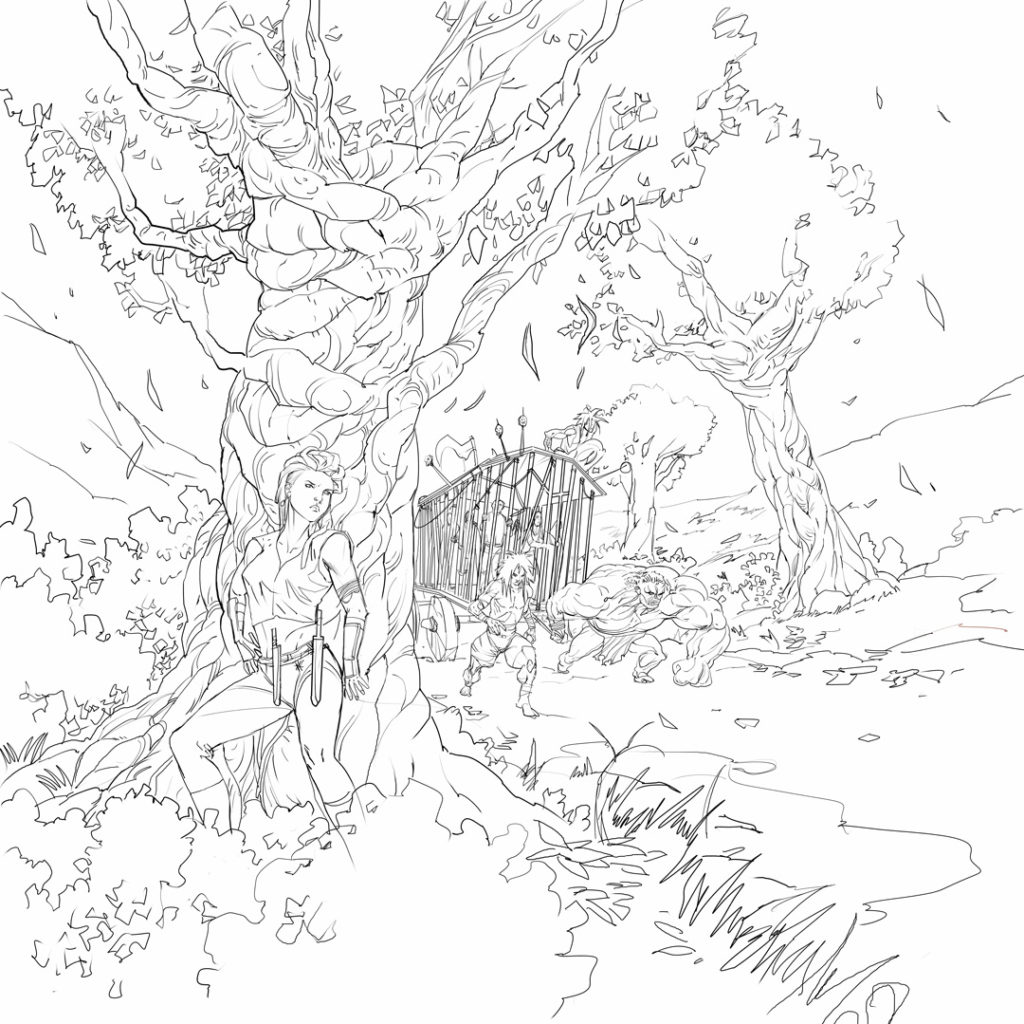
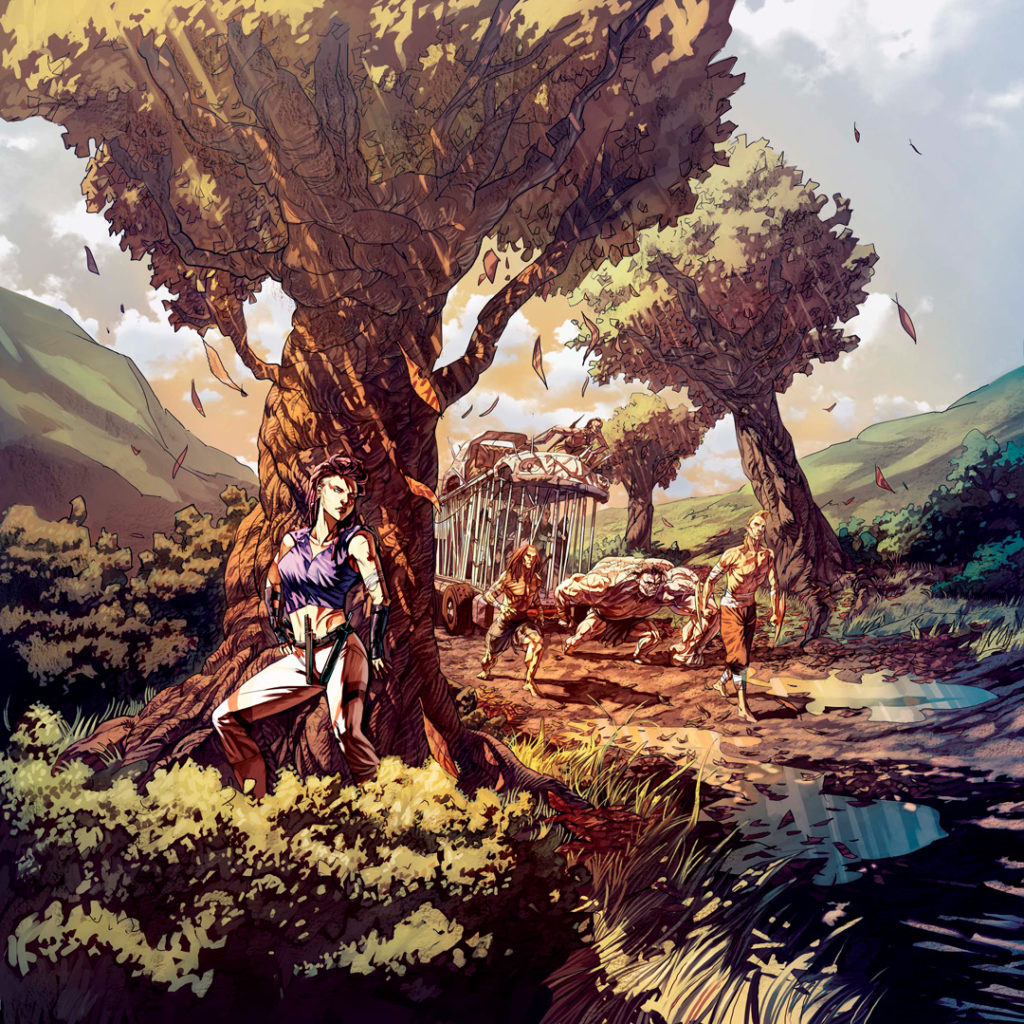
ENG | We don’t want to finish the interview without congratulating you for your next great work in the comic sector with Vodou Cowboy by author Matt Garvey, which we will soon be able to support in its Kickstarter campaign. What can you tell us about the project and how has the experience been?
I can say that Matt is a blessed, he waited me a lot before to have the complete issue, I thank you again, it’s a really interesting project where I had a lot of fun working on, I hope the Kickstarter goes well, as I said before these days it should be live so I take this opportunity to invite readers to drop by and take a look Vodou Cowboy
ESP | No queremos terminar la entrevista sin felicitarte por tu próximo gran trabajo en el sector del cómic, llamado Vodou Cowboy del autor Matt Garvey, que pronto podremos apoyar en su campaña de Kickstarter. ¿Qué nos puedes contar del proyecto y cómo ha sido la experiencia?
Puedo decir que Matt es un bendito, me esperó mucho antes para tener el número completo, se lo agradezco de nuevo, es un proyecto realmente interesante en el que me divertí mucho trabajando, espero que el Kickstarter vaya bien, como dije antes en estos días debería estar en vivo así que aprovecho para invitar a los lectores a que se pasen y echen un vistazo Vodou Cowboy

ENG | Finally, do you have any new or upcoming projects you want (or can) tell us about?
Oh yes, to tell the truth, this is a very intense period, as far as board games are concerned I’m working on several things, two to be precise, but I can’t talk about, unfortunately, but I would also like to say about one of my comics project that is coming out in these months «Blood on Sunset» for Source Point Press, written by Mark D’Anna a very good screenwriter and dear friend.
I have just closed another very nice comic that I cannot talk about at all that will see the light at the end of 2022 or the beginning of 2023, and I am currently working on another series which of course is always top secret.
I would like to take this opportunity to invite readers to take a look at my previous works on the Comixology page where all my works done for the USA and India are collected: ver enlace
and finally, also the Mightyboards shop where you can find all the versions of Posthuman clearly designed by me! https://www.mighty-boards.com/shop
🙂 Thanks!!!
ESP | Por último, ¿tiene algún proyecto nuevo o próximo del que quiera (o pueda) hablarnos?
Oh sí, a decir verdad, este es un período muy intenso, en cuanto a los juegos de mesa estoy trabajando en varias cosas, dos para ser precisos, pero de las que no puedo hablar, por desgracia, pero también me gustaría decir acerca de uno de mis proyectos de cómic que va a salir en estos meses «Blood on Sunset» para Source Point Press, escrito por Mark D’Anna un muy buen guionista y querido amigo.
Acabo de cerrar otro cómic muy bonito del que no puedo hablar en absoluto y que verá la luz a finales de 2022 o principios de 2023, y actualmente estoy trabajando en otra serie que por supuesto siempre es alto secreto.
Aprovecho para invitar a los lectores a que echen un vistazo a mis trabajos anteriores en la página de Comixology donde se recogen todos mis trabajos realizados para EEUU e India: ver enlace
¡y por último, también la tienda de Mightyboards donde puedes encontrar todas las versiones de Posthuman claramente diseñadas por mí! ver enlace
🙂 ¡¡¡Gracias!!!
Muchas gracias Arjuna 😉
(Todas las imágenes cedidas por Arjuna Susini)

